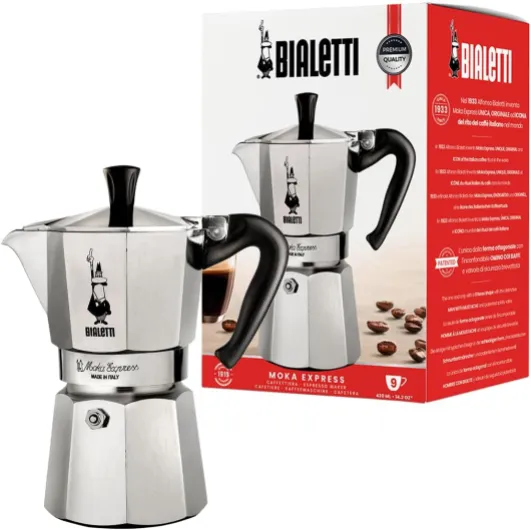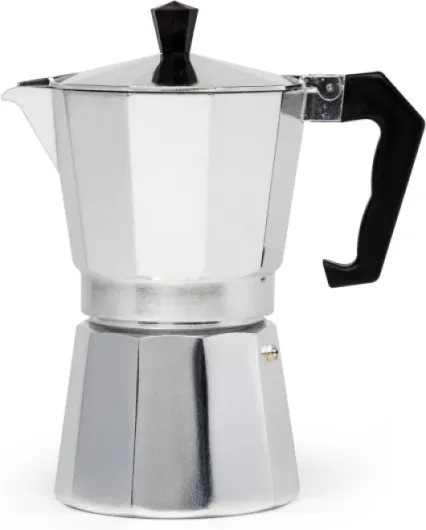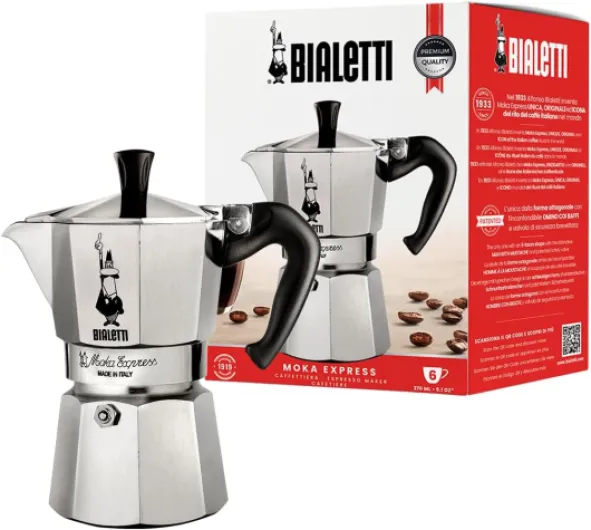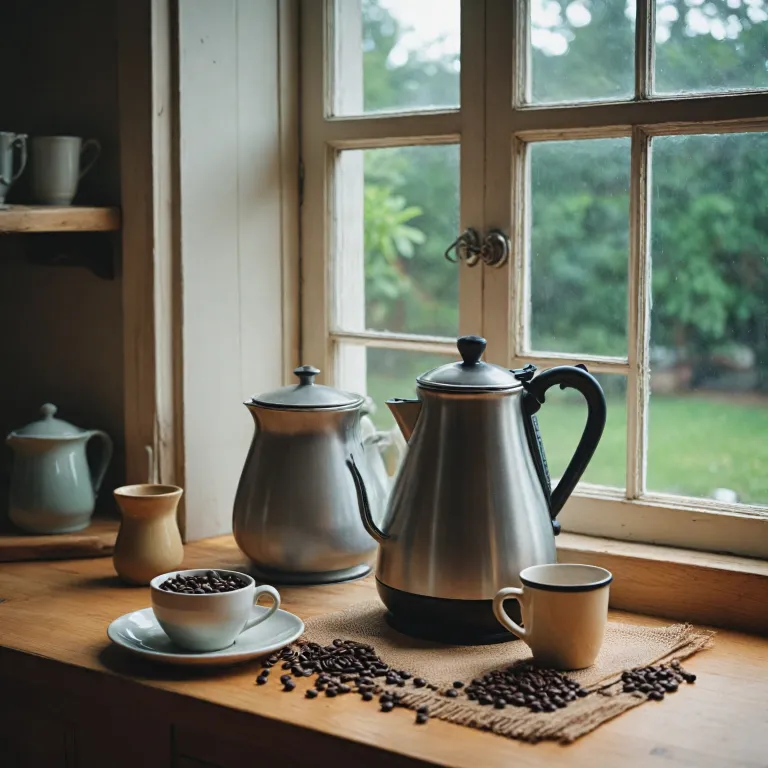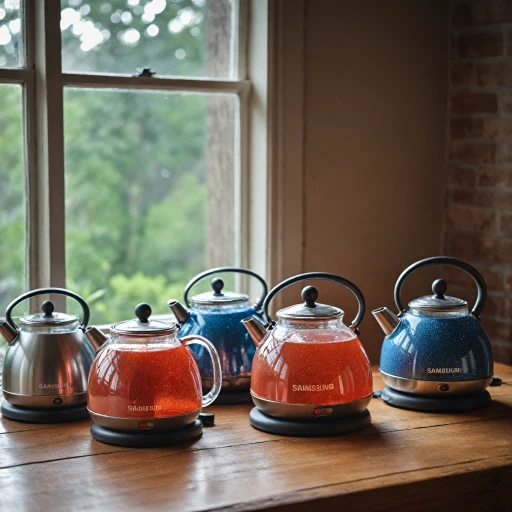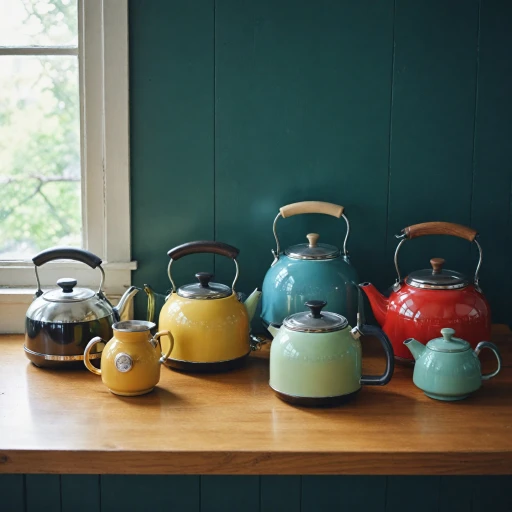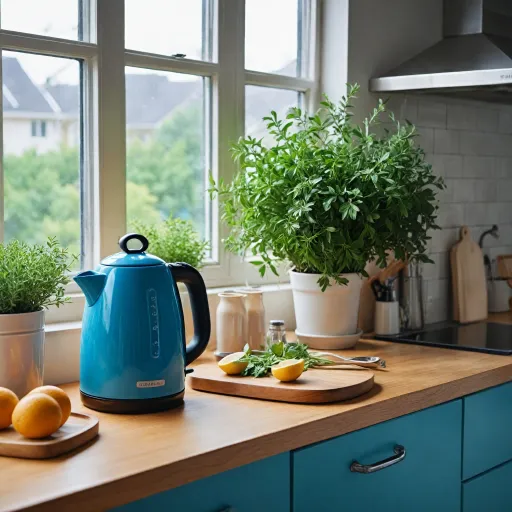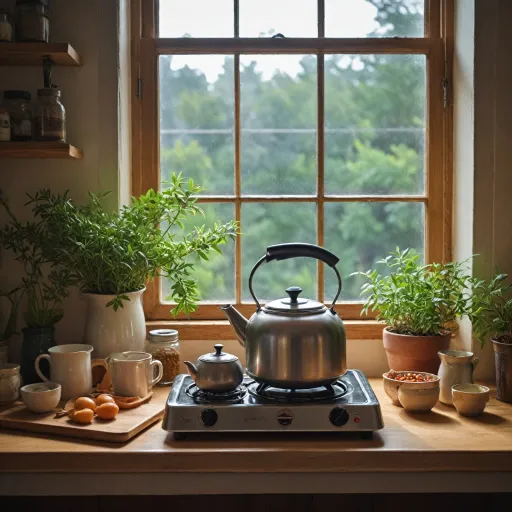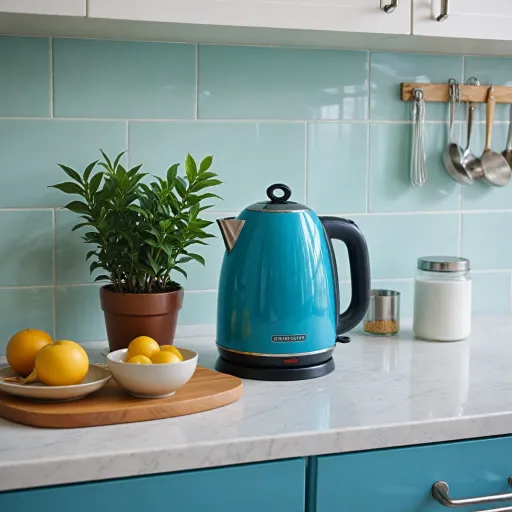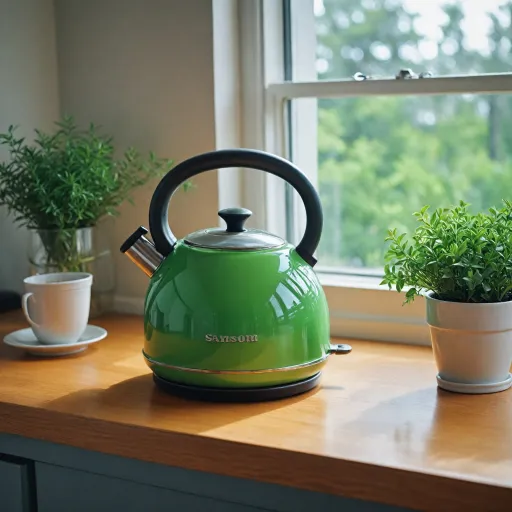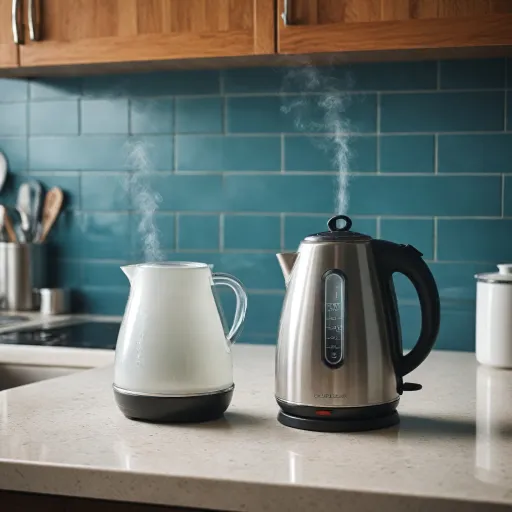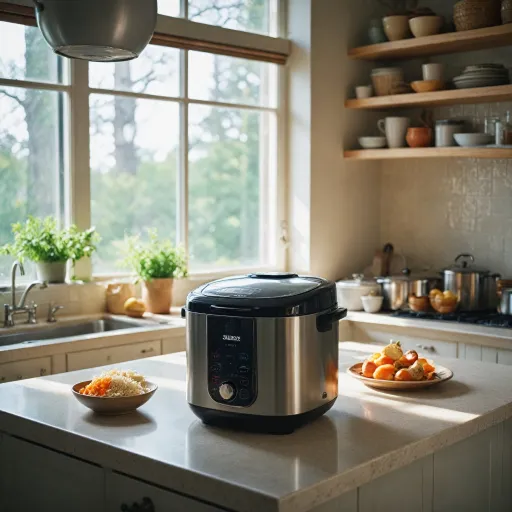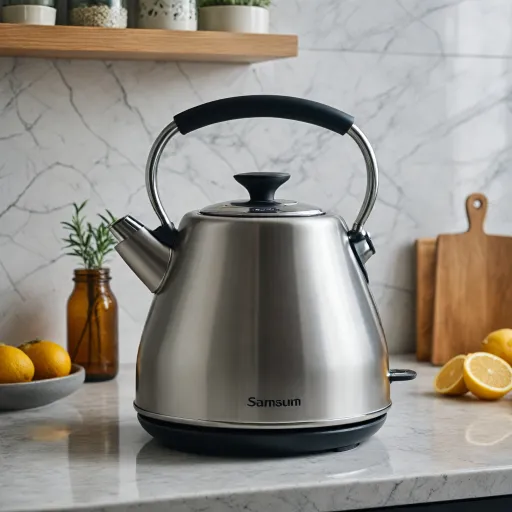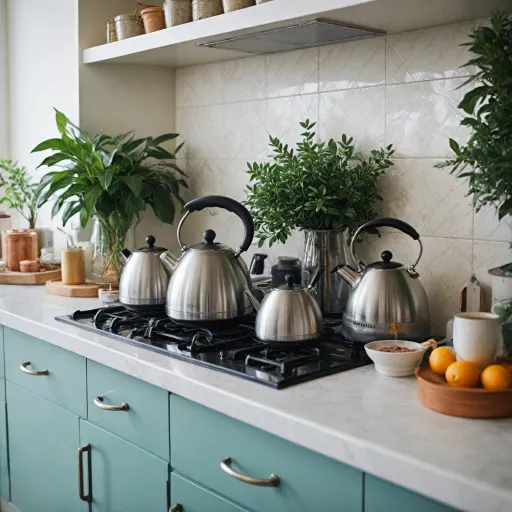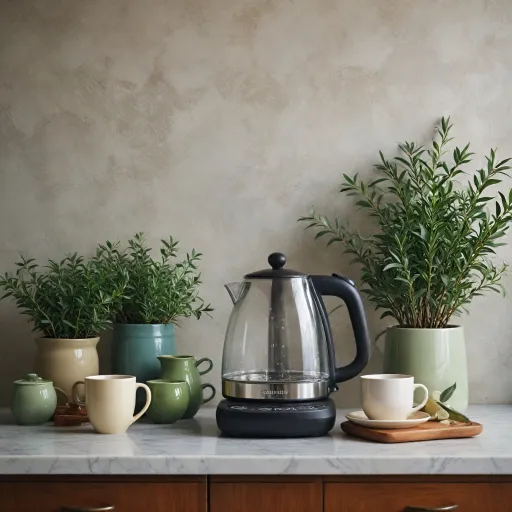
Understanding the Italian coffee kettle
What Makes an Italian Coffee Kettle Unique?
Italian coffee kettles, often called moka pots or moka express makers, are iconic for brewing rich, aromatic espresso coffee at home. Unlike electric kettles or drip coffee makers, these products use steam pressure to push hot water through ground coffee, producing a strong, flavorful cup. The classic design, popularized by brands like Bialetti, is recognized worldwide for its octagonal aluminium body and practical safety valve. Many coffee lovers in the United States and beyond appreciate the moka pot for its ability to deliver authentic Italian coffee without the need for a full espresso machine.
How Does a Moka Pot Work?
The moka coffee process is simple yet effective. Water is placed in the bottom chamber of the pot, ground coffee goes into the filter basket, and the top chamber collects the brewed coffee. As the water heats, steam pressure forces it up through the coffee grounds and into the upper pot. This method creates a concentrated, espresso-like drink that’s perfect for those who enjoy a bold coffee experience. The size of the pot determines how many cups you can brew at once, with options ranging from single-cup to larger family sizes.
Materials and Design Choices
Most moka pots are made from aluminium, which heats quickly and evenly, though some newer models are designed for induction cooktops and use stainless steel. The design isn’t just about looks; it affects how easy the pot is to clean, how well it retains heat, and how durable it is over time. The safety valve is a crucial feature, ensuring that excess pressure doesn’t build up during brewing. When choosing a coffee maker, consider whether you need a product compatible with induction, how easy it is to clean, and the overall quality of the materials.
Why Italian Coffee Kettles Remain Popular
Italian moka pots have stood the test of time because they offer a simple, reliable way to make espresso coffee at home. Their compact size, classic design, and ability to brew quality coffee without electricity make them a staple in kitchens worldwide. Whether you’re a fan of the traditional Bialetti moka or exploring other brands, understanding how these pots work and what makes them special is the first step to enjoying great coffee every day. For more on how kettles fit into modern kitchens, check out this article on the role of kettles and water heaters in today’s kitchens.
Key features to look for in a coffee kettle Italian
Essential Elements for a Quality Italian Coffee Kettle
When selecting an Italian coffee kettle, whether you’re eyeing a classic moka pot or a modern bialetti induction model, the details matter. The right product will influence the flavor, aroma, and overall experience of your brewed coffee. Here’s what to keep in mind as you compare options.
- Material and Build Quality: Most traditional moka pots are made from aluminium, which is lightweight and offers good heat conduction. However, if you have an induction cooktop, look for stainless steel or bialetti induction models. Quality materials not only affect taste but also the kettle’s longevity and safety.
- Design and Size: Italian coffee makers come in various sizes, from single-cup moka pots to larger coffee pots for several cups. Consider your daily brewing needs. A compact design is ideal for small kitchens, while a larger pot suits gatherings. The classic moka express design remains popular for its ease of use and iconic look.
- Filter and Safety Valve: A reliable filter ensures that ground coffee stays in place and doesn’t end up in your cup. The safety valve is crucial for releasing excess pressure during brewing, preventing accidents and ensuring a smooth espresso coffee experience.
- Compatibility: Not all moka pots work on every stovetop. If you use induction, check for a compatible bialetti induction or stainless steel coffee maker. For traditional gas or electric stoves, aluminium moka pots are a classic choice.
- Ease of Cleaning: Look for a coffee pot with parts that are easy to disassemble and clean. Some models are dishwasher safe, but hand washing is often recommended to preserve the quality and finish.
Comparing Features: What Sets Top Italian Coffee Makers Apart
With so many moka express and espresso maker options on the market, it’s easy to get overwhelmed. Focus on these aspects to make a confident choice:
| Feature | Why It Matters |
|---|---|
| Material (Aluminium vs. Stainless Steel) | Aluminium moka pots are traditional and affordable, while stainless steel models are durable and induction-friendly. |
| Size (Cup Capacity) | Choose based on how much coffee you brew at once. Cup size can range from 1 to 12 cups. |
| Safety Valve | Essential for safe brewing, especially with espresso coffee makers. |
| Filter Quality | Prevents coffee grounds from entering your cup, ensuring a smooth brew. |
| Induction Compatibility | Necessary for use on induction cooktops; look for bialetti induction or similar models. |
| Ease of Cleaning | Removable parts and simple design make for easy clean-up and maintenance. |
For a deeper dive into the modern kettle pot and how design impacts your coffee experience, check out this comprehensive guide to modern kettle pots.
Remember, the right Italian coffee maker isn’t just about brewing coffee—it’s about enjoying the ritual, savoring the aroma, and making every cup special. The next steps will help you compare electric and stovetop models and master the art of moka coffee brewing at home.
Comparing electric and stovetop Italian coffee kettles
Electric or Stovetop: Which Italian Coffee Kettle Suits You?
Choosing between an electric and a stovetop Italian coffee kettle can shape your daily coffee ritual. Both types have their loyal fans and unique benefits, especially when it comes to brewing authentic moka or espresso coffee at home. Here’s a closer look at how they compare, so you can pick the best product for your needs.- Convenience and Speed: Electric moka pots offer quick heating and automatic shut-off features, making them ideal for busy mornings. If you value convenience, check out this guide to kettles with auto shut-off. Stovetop models, like the classic Bialetti Moka Express, require manual attention but give you more control over the brewing process.
- Design and Material: Traditional moka pots are often made from aluminium, which heats up quickly and is lightweight. Some modern electric models use stainless steel or are compatible with induction cooktops. The design of both types preserves the iconic Italian coffee pot look, but electric versions may have extra safety features, such as a safety valve or cool-touch handles.
- Brewing Quality: Both electric and stovetop moka pots can produce rich, aromatic espresso coffee. However, stovetop pots allow you to fine-tune the brewing by adjusting the heat source. Electric models standardize the process, which can be helpful for beginners or those seeking consistent results.
- Size and Capacity: Italian coffee makers come in various cup sizes, from single-cup moka pots to larger models for families. Electric versions may have more limited size options, while stovetop pots like the Bialetti moka are available in a wide range of sizes.
- Cleaning and Maintenance: Electric moka pots often have more parts and may require careful cleaning to avoid damaging electrical components. Stovetop models are generally easy to clean and maintain, especially if you follow proper care tips for aluminium or stainless steel pots.
| Feature | Electric Italian Coffee Kettle | Stovetop Italian Coffee Kettle |
|---|---|---|
| Speed | Fast, automatic | Manual, depends on heat source |
| Material | Stainless steel, aluminium, induction-compatible | Mostly aluminium, some stainless steel |
| Brewing Control | Standardized process | Manual control over heat and timing |
| Cleaning | More parts, careful cleaning needed | Easy clean, fewer parts |
| Portability | Needs power source | Works anywhere with a stove |
How to use a coffee kettle Italian for the perfect brew
Getting the Most Flavor from Your Moka Pot
Brewing authentic Italian coffee with a moka pot, like the classic Bialetti moka express, is all about technique and attention to detail. The right approach ensures a rich, aromatic cup every time. Here’s how to use your Italian coffee maker for the perfect brew:
- Choose the right grind: Use medium-fine ground coffee, not as fine as espresso machine grounds but finer than drip. This helps prevent clogging the filter and ensures even extraction.
- Fill with fresh water: Pour cold, filtered water into the bottom chamber up to the safety valve. Avoid overfilling, as this can affect brewing quality and safety.
- Add coffee grounds: Fill the filter basket with ground coffee, leveling it off without pressing down. Tamping can cause excess pressure and bitter flavors.
- Assemble the pot: Screw the top and bottom sections together firmly. Make sure the rubber gasket and filter are clean and properly seated to prevent leaks.
- Heat gently: Place the moka pot on the stovetop over medium-low heat. For induction cooktops, use a compatible moka pot or a Bialetti induction model. Avoid high heat, which can scorch the coffee and damage aluminium pots.
- Watch the brewing process: As the water heats, pressure pushes it through the coffee grounds and up into the top chamber. Listen for a hissing or gurgling sound—this signals the brewing is nearly done. Remove from heat promptly to prevent over-extraction.
- Serve immediately: Pour the brewed coffee into your cup as soon as brewing stops. Enjoy as is, or use it as a base for espresso coffee drinks.
Tips for Consistent Results
- Use the correct cup size moka pot for your needs. Brewing with a partially filled pot can affect flavor and pressure.
- Regularly check the safety valve and filter for blockages. Clean after each use for easy clean and long-lasting quality.
- Experiment with coffee blends and grind size to match your taste preferences and the design of your coffee maker.
Whether you’re using a traditional aluminium moka express or a modern Bialetti induction coffee pot, mastering the brewing process is key to enjoying authentic Italian coffee at home. Consistent practice and attention to product details will help you achieve that perfect cup every time.
Maintenance and cleaning tips for longevity
Keeping Your Moka Pot in Top Shape
Proper maintenance is essential for any Italian coffee kettle, whether you own a classic Bialetti moka pot or a modern induction-compatible model. Regular cleaning not only preserves the quality of your brewed coffee but also extends the life of your coffee maker.- Disassemble After Each Use: Always take apart your moka express after brewing. Remove the pot, filter, and gasket to rinse away coffee grounds and oils. This prevents buildup that can affect taste and performance.
- Use Warm Water Only: Avoid using soap, especially with aluminium moka pots. Soap can leave residues that impact the flavor of your espresso coffee. Simply rinse all parts under warm water and let them air dry.
- Check the Safety Valve: The safety valve is a critical feature for moka coffee makers. Make sure it is clean and moves freely. If it gets clogged, it can cause pressure issues during brewing.
- Inspect the Gasket and Filter: Over time, the rubber gasket and metal filter may wear out. Check them regularly for cracks or damage. Replacing these parts ensures a tight seal and optimal brewing pressure.
- Prevent Limescale: If you live in an area with hard water, mineral deposits can build up inside your coffee pot. Occasionally fill the water chamber with a mix of water and white vinegar, let it sit, then rinse thoroughly. This keeps your moka express working efficiently.
Storage and Handling Tips
- Dry Completely: After cleaning, make sure every part of your moka pot is dry before reassembling. Moisture can cause aluminium pots to oxidize and affect the taste of your coffee.
- Store Disassembled: For longer periods, store your moka pot with the lid open and parts separated. This prevents trapped moisture and odors.
Easy Clean for Lasting Quality
A well-maintained moka pot delivers consistent espresso-like coffee and preserves the unique Italian design and quality. Whether you use a small cup size or a larger coffee maker, these steps help ensure every brew is fresh and flavorful. Regular care also supports the longevity of induction-ready moka pots and traditional models alike, making your investment in a quality product worthwhile for years to come.Common mistakes to avoid with Italian coffee kettles
Overfilling the Water Reservoir
One of the most common mistakes with Italian coffee makers, like the Bialetti Moka Express, is adding too much water. The water should never rise above the safety valve inside the pot. Overfilling can lead to poor brewing, potential leaks, and even safety risks. Always check the maximum water level before brewing your espresso coffee.
Packing the Coffee Grounds Too Tightly
When preparing your moka pot, avoid tamping or pressing the ground coffee into the filter. Unlike an espresso machine, a moka coffee maker works best when the coffee is loosely filled. Packing the grounds too tightly can block the flow of water, resulting in weak or bitter coffee and possible damage to the product.
Using the Wrong Grind Size
For moka pots, the grind size is crucial. Too fine, and the filter may clog; too coarse, and the brewed coffee will be weak. Aim for a medium-fine grind, similar to table salt. This helps ensure optimal extraction and a rich, authentic Italian coffee experience.
Neglecting Regular Cleaning
Failing to clean your coffee pot after each use can affect both the taste and the longevity of your moka express. Coffee oils and grounds can build up, leading to off-flavors and clogging. Always rinse all parts with warm water and let them dry completely. Avoid using soap, especially on aluminium moka pots, as it can affect the flavor and the quality of your next brew.
Ignoring the Gasket and Safety Valve
The gasket and safety valve are essential for safe operation. If the gasket is worn or the safety valve is blocked, pressure can build up dangerously. Inspect these parts regularly and replace them if needed. This is especially important for older moka pots or if you notice any leaks or changes in brewing performance.
Using the Wrong Heat Source
Not all moka pots are suitable for induction cooktops. If you have an induction stove, make sure to choose a Bialetti induction-compatible model. Using the wrong heat source can damage the coffee maker or result in uneven brewing. Aluminium pots, for example, do not work on induction unless specifically designed for it.
Choosing the Wrong Size
Italian moka pots come in various cup sizes. Using a pot that’s too large for your daily needs can lead to wasted coffee and inconsistent brewing. Select a size that matches your typical serving, whether you prefer a single cup or a larger batch for guests.
- Never use pre-ground coffee meant for espresso machines; always check the grind size.
- Do not leave brewed coffee sitting in the pot, as it can develop a metallic taste.
- Replace filters and gaskets as soon as you notice wear for the best quality and safety.

